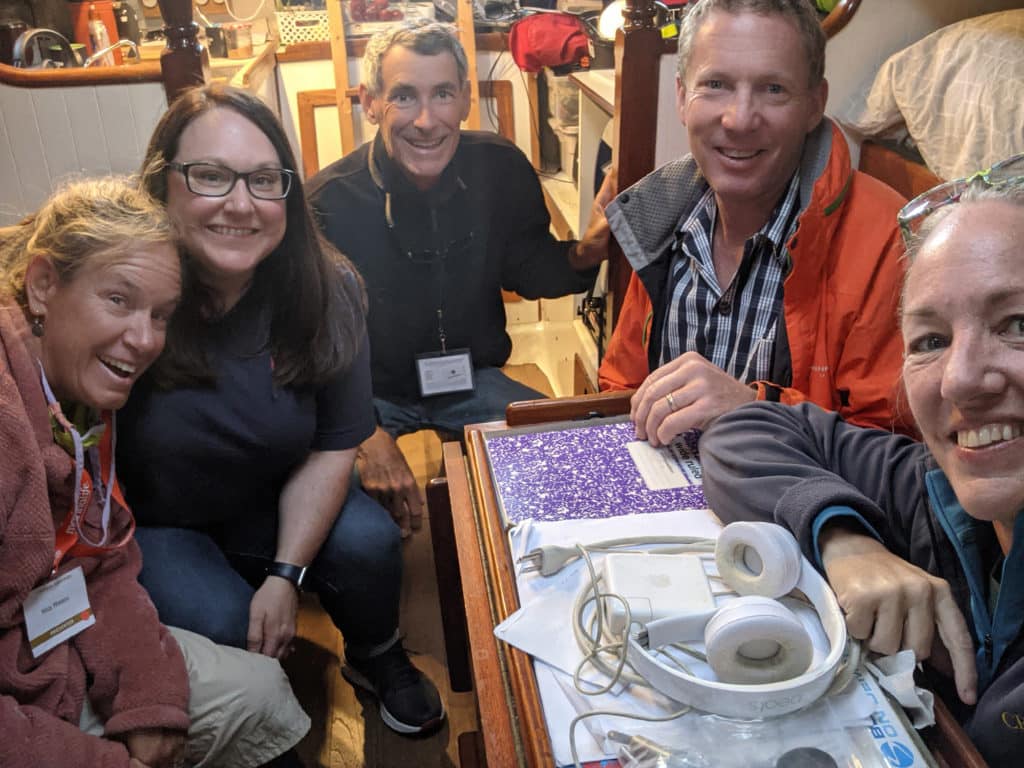It’s been a few days since Jamie and I returned from the United States Sailboat Show in Annapolis, Maryland. What a whirlwind! Except whirlwind implies brevity, and this particular adventure was nearly two weeks, including four days dedicated to traveling! Jamie and I love teaching at Cruisers University while in Annapolis, and we enjoy trying to induct future cult members (I mean entice future cruisers!) and help them work toward launching their own boating adventures.
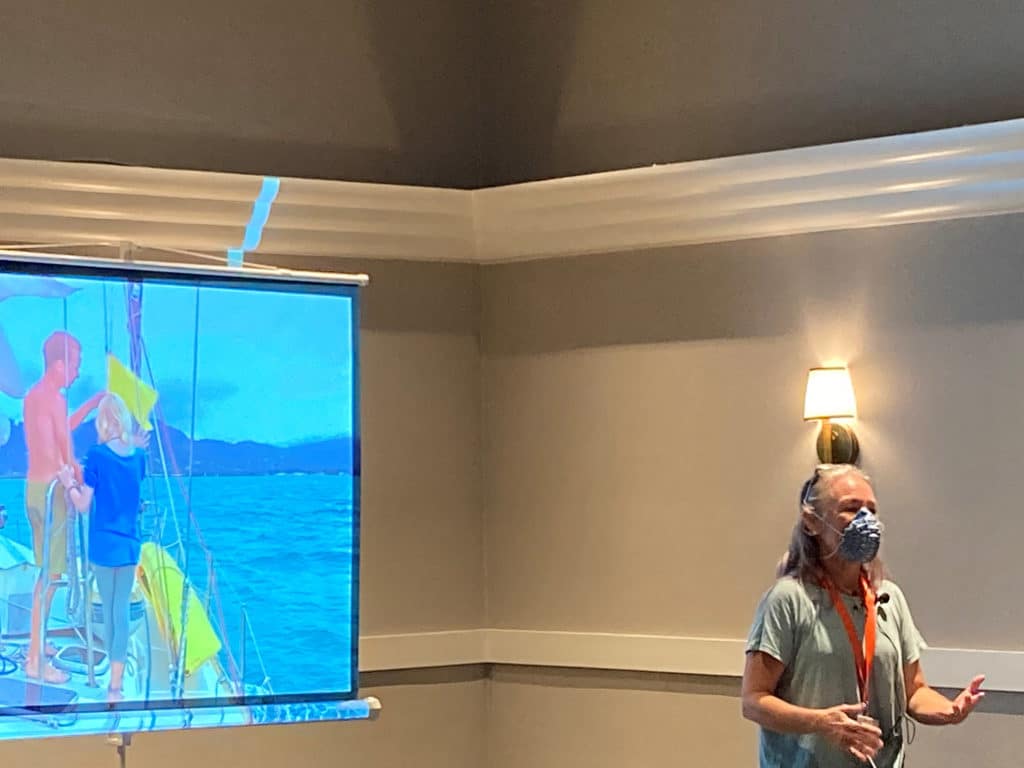
The meetup with our coaching family – there were 86 TRU Crew in attendance– always makes my heart sing! It feels like there’s never quite enough time to connect with people, but the opportunity to connect at all was a gift, especially after these long pandemic months.

We hoped to spend time wandering the show with our own shopping list. But there was precious little free time. Near the top of our list: research new battery banks.
Energy management on board
Let’s back up a little: a boat’s energy system falls into three categories. There are energy producers, energy consumers and energy storage (more on the categories in this post from our Malaysian adventures). When in balance, managing energy systems in our watery world isn’t hard; when they’re out of balance, it can add hassle, complication and cost. Reaching that balance isn’t so difficult, but maintaining it can be a trick.
Generation, use and storage
Energy consumption is dynamic. Totem’s energy systems were probably reasonably well balanced for the prior owner who cruised with a crew of one or two. Our crew of five increased the number of energy consumers, creating an imbalance. We addressed this by improving charging sources and replacing aging batteries. But we soon fell out of balance again after sailing south to the intense heat in Mexico, where failing insulation made our refrigerator and freezer power draw ridiculously high. We regained balance by converting our fridge / freezer combo into a root cellar / fridge combo, significantly reducing power draw while sacrificing all hope of ice cream and ice cubes on Totem.
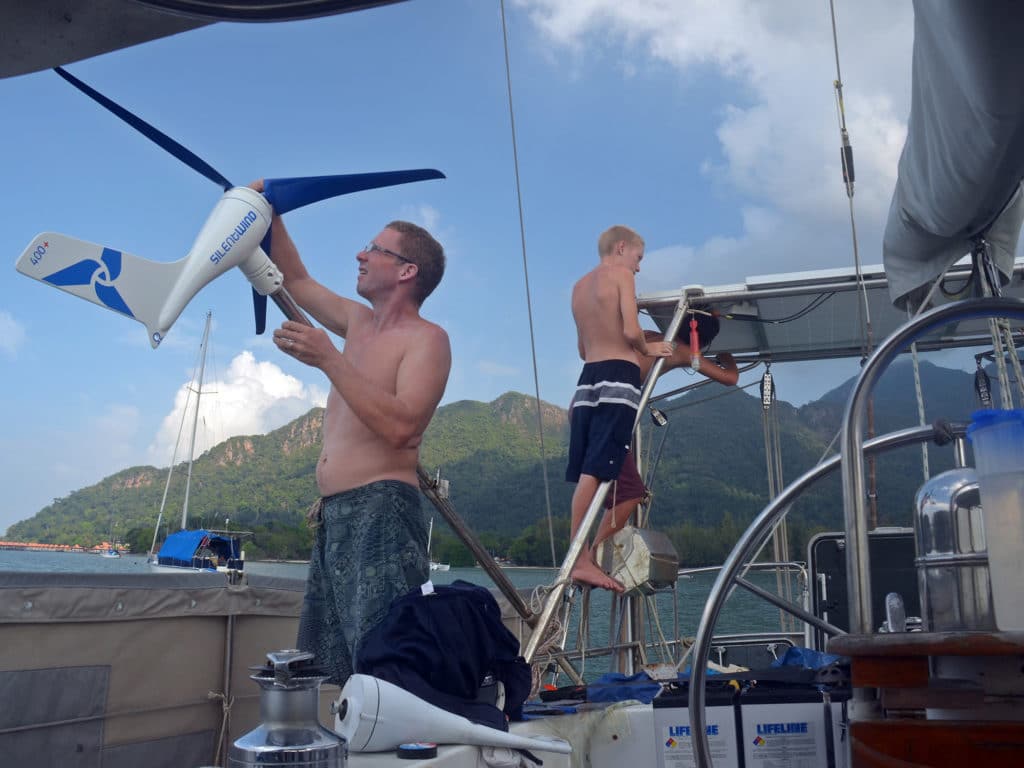
Over years of cruising, we’ve cycled between imbalance and rebalance many times, often driven by a change in regions and climate, a change in gear, or aging batteries that perform nothing like when new, and even aging kids who require more computer use.
Batteries for energy storage are consumable items, with capabilities that degrade with use and age. Charging sources tend to last longer, but aren’t forever devices. They can fail, as we’ve seen with our alternator, two battery chargers, and a wind turbine over the last 14 years. Totem is now deep into a major refit for her upcoming 40th birthday. We have a big list, from a adding a new engine and painting the topsides to replacing worn out anchor chain and, oh hey, adding a toilet and a stove and …you get the idea. Somewhere on the list is another new battery bank. This will be our fourth bank since buying Totem in 2007.
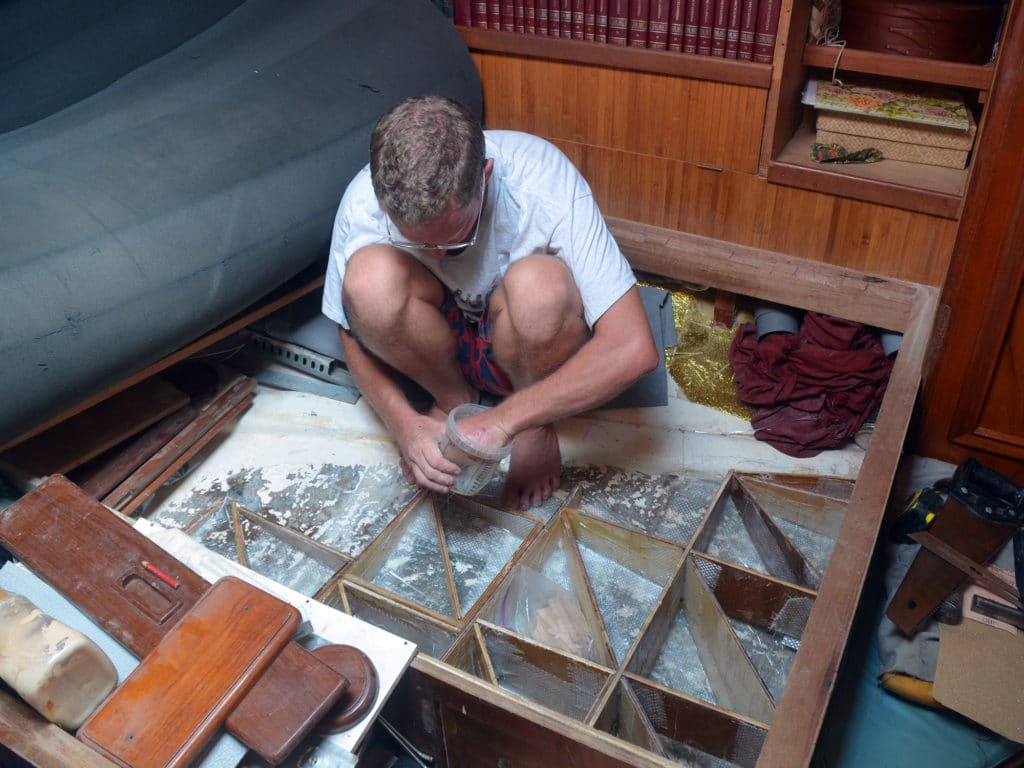
The switch from AGM to lithium?
With this bank we’ll shift away from lead-based batteries and leap-frog directly to cold fusion. I’m kidding! But we will make the change from our current AGMs to a lithium bank, or LiFePO4, as the more specific chemistry often used for these batteries. Lithium banks provide significantly more energy storage capacity per volume, for significantly less weight. But they can be finicky on installation, and introduce new factors and complexity to the onboard energy system.
Lithium batteries were a consideration when we upgraded in Malaysia (2014) and in Florida in 2017, but we were concerned about the battery management systems (BMS) essential for safe installations. Also, we couldn’t afford them – kind of a showstopper.
In the intervening years, LiFeO4 batteries and BMSs have improved and are now reliable and safe, mostly. Meanwhile, our silver lining from the pandemic pause is that it’s allowed us to, well, work our asses off! Growing TRU coaching service, and writing articles, and selling sails has helped us save enough to spiffy up Totem for her 40th and to serve as our magic carpet to the South Pacific again.
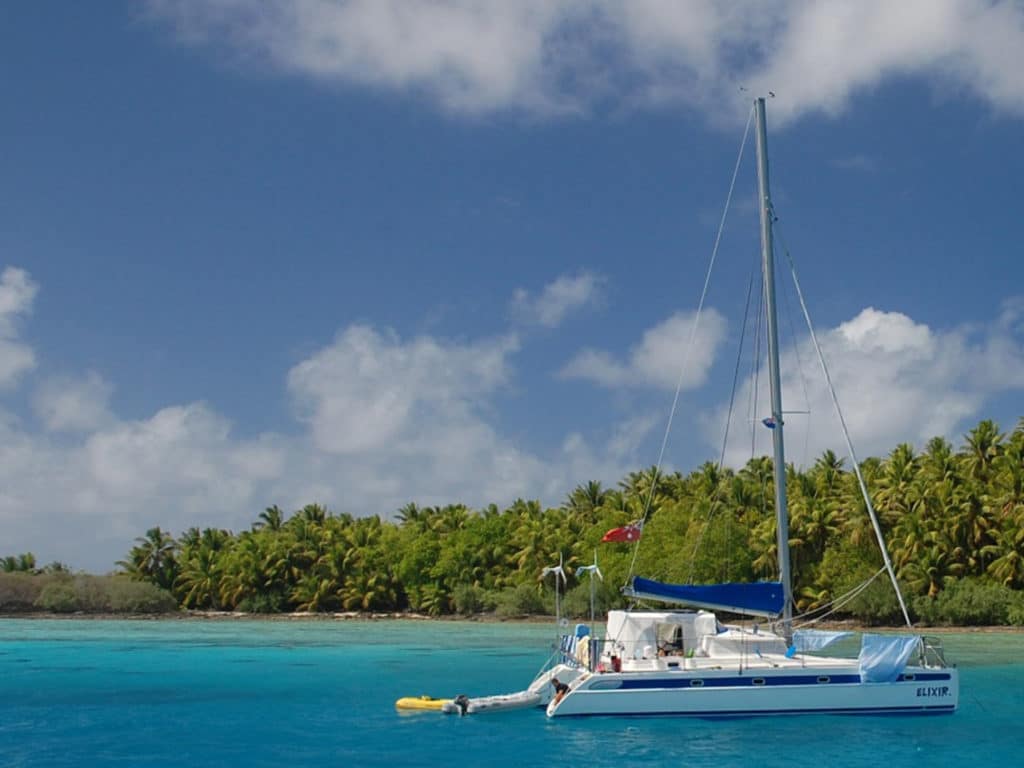
What kind of lithium bank?
This upgrade is exciting, but needs careful research. Jamie’s still too mired in fiberglassing projects to work out the bigger picture balance of the new energy system yet, or do a source selection for the batteries themselves. Many cruisers are doing a homebrew approach with less costly lithium batteries and separately sourced BMS for an appealing cost-per-amp value. One concern is a BMS with lesser quality control might fail to shut down a lithium cell when needed. DIY may have the best bang for the buck, but established brands have the security of tested and established quality-control components. Reliability equates to higher safety and hopefully, fewer headaches with insurance (some underwriters are balking at insuring boats with lithium banks). Between DIY and established commercial options there is a middle price option, where a skilled (we hope) service provider bundles lithium cells with a battery management system.
But selection is more than a choice of capacity and brand. We also need to ensure that charging sources are up to the higher rates of charge that lithium batteries take: it’s a system-wide look, not just picking out new batteries. Our research is cut out for us. Feel free to share your suggestions and opinions in the comments, or get in touch! We’ll document our choice and installation as it unfolds.
Meanwhile, back in Annapolis, we never did make the rounds of battery vendors but we were fortunate to have dinner one night with several of Cruising World’s Boat of the Year judges, including ABYC’s curriculum guru, Ed Sherman. Ed is a systems expert and the author of Advanced Marine Electrics and Electronics Troubleshooting (a great book for the nav station!). We had quite the interesting conversation about the challenge of arriving at standards for technologies that are both dynamic and still relatively new in adoption, among cruising boats.
We are so, so ready to stretch out to new cruising areas with our energy system in balance.
Sunday: TOTEM TALKS on anchoring
Join us October 31, at 3pm PT / 6pm ET: we’re going to talk about good times (and not) when anchoring, share insights and tips, anchoring in the wild, how to be kind to delicate sea floor environments like oh hey coral reefs and turtle grass when you anchor, anchoring gear and, well, answer any questions you have! Click here to register.
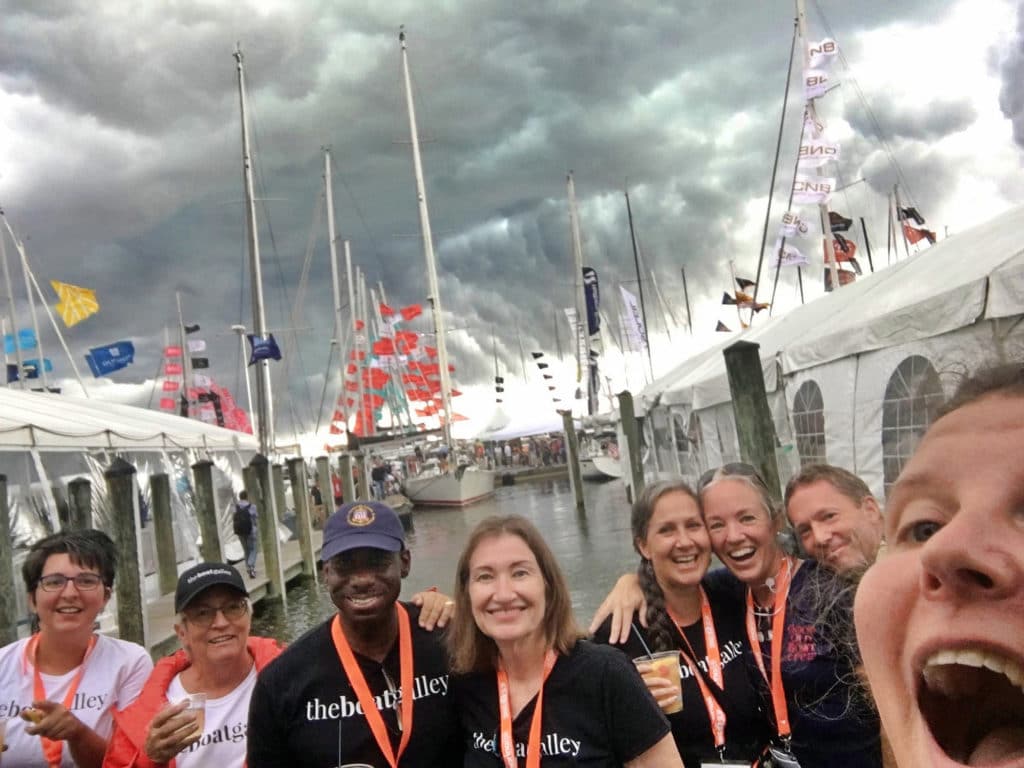
Leaving you with sparkly memories from the Annapolis Boat Show
